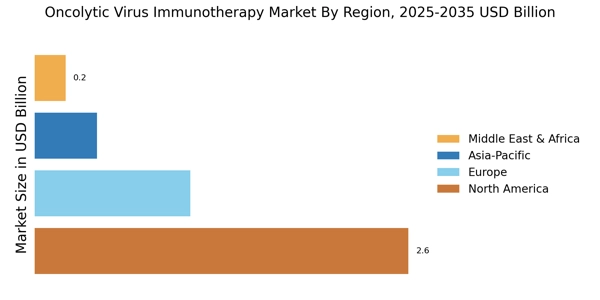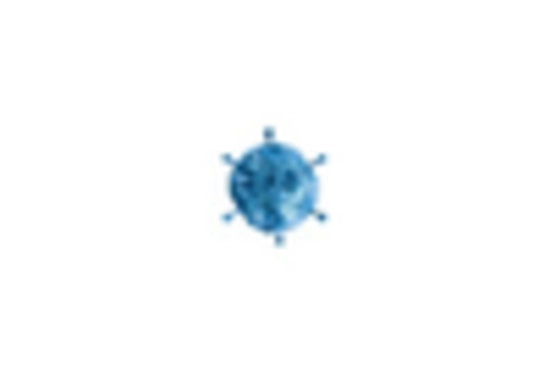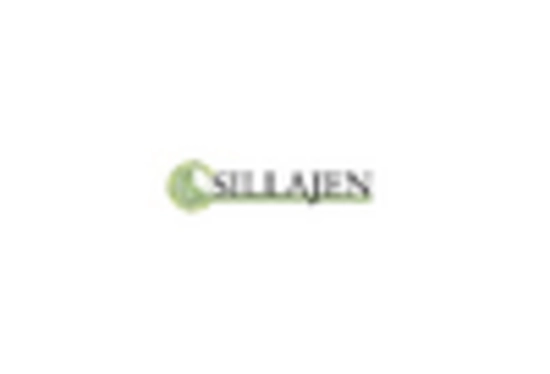Rising Incidence of Cancer
The Oncolytic Virus Immunotherapy Market is experiencing growth due to the increasing incidence of various cancer types worldwide. According to recent statistics, cancer cases are projected to rise significantly, with estimates suggesting that by 2040, there could be over 27 million new cancer cases annually. This alarming trend necessitates innovative treatment options, propelling the demand for oncolytic virus therapies. These therapies harness the power of viruses to selectively target and destroy cancer cells, offering a promising alternative to traditional treatments. As healthcare systems strive to address this growing burden, the Oncolytic Virus Immunotherapy Market is likely to expand, driven by the urgent need for effective cancer therapies.
Growing Investment in Cancer Research
The Oncolytic Virus Immunotherapy Market is benefiting from a surge in investment directed towards cancer research. Governments and private entities are increasingly allocating funds to explore innovative cancer treatments, including oncolytic virus therapies. In recent years, funding for cancer research has reached unprecedented levels, with billions of dollars being invested annually. This financial support is crucial for advancing clinical trials and bringing new therapies to market. As research progresses, the Oncolytic Virus Immunotherapy Market is expected to witness a proliferation of novel therapies, enhancing the overall landscape of cancer treatment options available to patients.
Technological Advancements in Gene Therapy
Technological advancements in gene therapy are playing a pivotal role in the Oncolytic Virus Immunotherapy Market. Innovations in genetic engineering and virology have led to the development of more effective oncolytic viruses that can be tailored to target specific cancer types. For instance, the use of CRISPR technology has enabled researchers to enhance the efficacy of oncolytic viruses, potentially increasing their therapeutic impact. As these technologies continue to evolve, they are expected to facilitate the creation of next-generation oncolytic virus therapies, thereby attracting investment and interest in the Oncolytic Virus Immunotherapy Market. The integration of advanced technologies is likely to enhance treatment outcomes and patient survival rates.
Regulatory Support for Innovative Therapies
Regulatory bodies are increasingly providing support for the development of innovative cancer therapies, including those within the Oncolytic Virus Immunotherapy Market. Recent initiatives aimed at expediting the approval process for breakthrough therapies have created a more favorable environment for oncolytic virus treatments. For instance, the introduction of fast-track designations and priority review pathways has enabled companies to bring their therapies to market more swiftly. This regulatory support not only encourages investment in research and development but also enhances patient access to potentially life-saving treatments. As a result, the Oncolytic Virus Immunotherapy Market is poised for growth, driven by a conducive regulatory landscape.
Increasing Awareness and Acceptance of Immunotherapy
The Oncolytic Virus Immunotherapy Market is witnessing a shift in perception regarding cancer treatment, with increasing awareness and acceptance of immunotherapy among healthcare professionals and patients. Educational initiatives and successful clinical outcomes have contributed to a growing understanding of the benefits of immunotherapy, including oncolytic virus therapies. As more patients and oncologists recognize the potential of these innovative treatments, the demand for oncolytic virus therapies is likely to rise. This trend is further supported by the increasing number of clinical trials demonstrating the efficacy of oncolytic viruses in treating various cancers, thereby solidifying their place in the Oncolytic Virus Immunotherapy Market.


















Leave a Comment